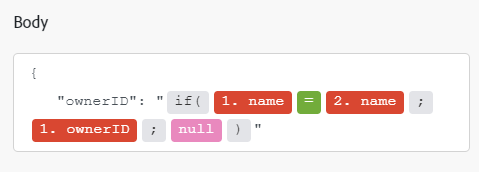Microsoft Office 365 Email modules
In an Adobe Workfront Fusion scenario, you can automate workflows that use Microsoft Office 365 Email, as well as connect it to multiple third-party applications and services.
Access requirements
| table 0-row-2 1-row-2 2-row-2 3-row-2 layout-auto html-authored no-header | |
|---|---|
| Adobe Workfront package |
Any Adobe Workfront Workflow package and any Adobe Workfront Automation and Integration package Workfront Ultimate Workfront Prime and Select packages, with an additional purchase of Workfront Fusion. |
| Adobe Workfront licenses |
Standard Work or higher |
| Adobe Workfront Fusion license |
Operation-based: No Workfront Fusion license requirement Connector-based (legacy): Workfront Fusion for Work Automation and Integration |
| Product | If your organization has a Select or Prime Workfront package that does not include Workfront Automation and Integration, your organization must purchase Adobe Workfront Fusion. |
For more detail about the information in this table, see Access requirements in documentation.
For information on Adobe Workfront Fusion licenses, see Adobe Workfront Fusion licenses.
Prerequisites
To use Microsoft Office 365 Email modules, you must have a Microsoft Office 365 Email account.
Microsoft Office 365 Email API information
The Microsoft Office 365 Email connector uses the following:
Connecting the Office 365 Email service to Workfront Fusion
For instructions about connecting your Office 365 Email account to Workfront Fusion, see Create a connection to Adobe Workfront Fusion - Basic instructions
Microsoft Office 365 Email modules and their fields
When you configure Microsoft Office 365 Email modules, Workfront Fusion displays the fields listed below. Along with these, additional Microsoft Office 365 Email fields might display, depending on factors such as your access level in the app or service. A bolded title in a module indicates a required field.
If you see the map button above a field or function, you can use it to set variables and functions for that field. For more information, see Map information from one module to another.

Message
Create and Send a Message (legacy)
This action module creates and sends an email message.
Delete a Message
This action module deletes an existing email message.
Get a message
This action module gets the metadata of a specific message
Move a Message
This action module moves an email message to a selected folder in the mailbox.
Search messages
This search module searches for messages based on specific criteria.
Watch Messages
This trigger module starts a scenario when a new email message is sent or received.
Draft Message
Create a Draft Message
This action module creates a new email message as a draft.
Send a Draft Message
This action module sends an email message that is currently in draft.
Update a Message
This action module updates an existing message.
Attachment
Download an Attachment
This module downloads the specified attachment.
List Attachments
This module retrieves a list of attachments belonging to the specified message.
Other
Add an Attachment
This module adds a large attachment to a message.
Create and Send a Message
This action module creates and sends an email message.
Make an API Call
This module allows you to perform a custom API call.
Select the HTTP request method you need to configure the API call. For more information, see HTTP request methods.
